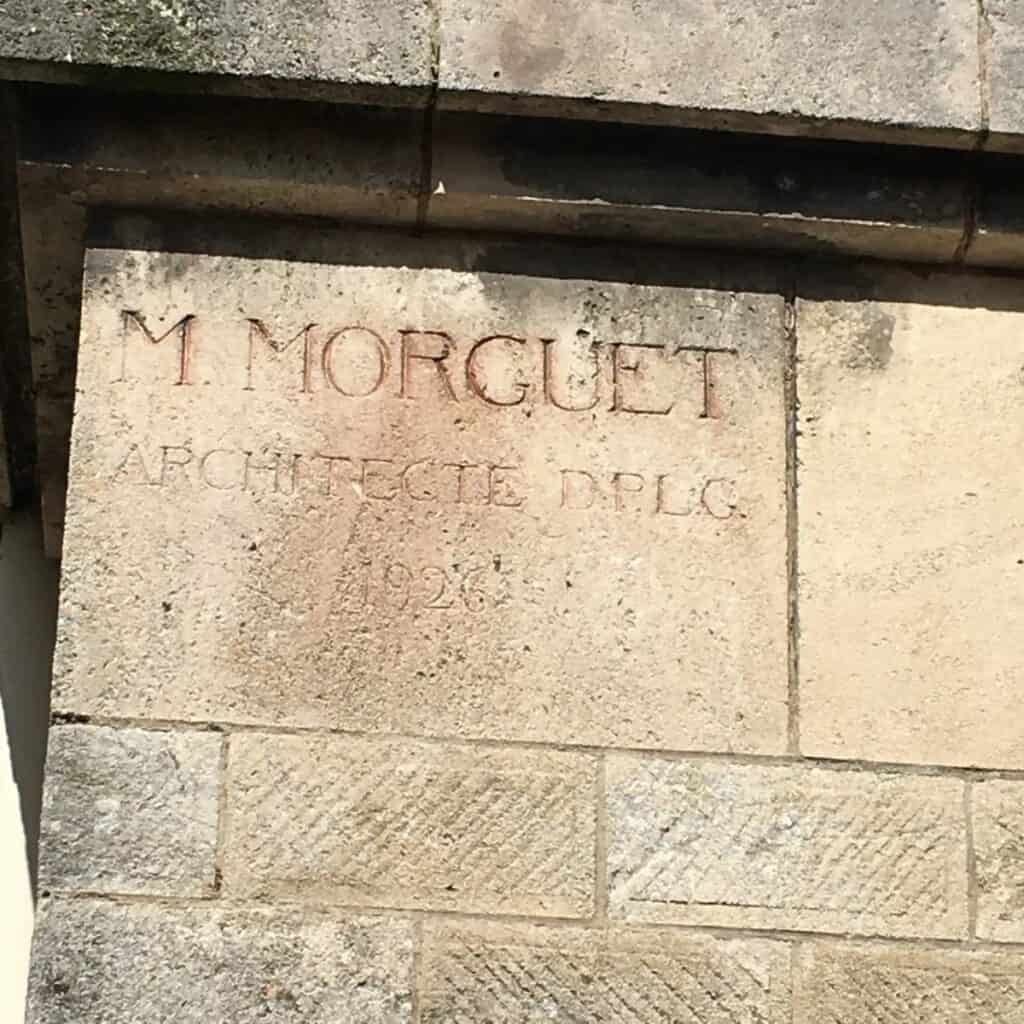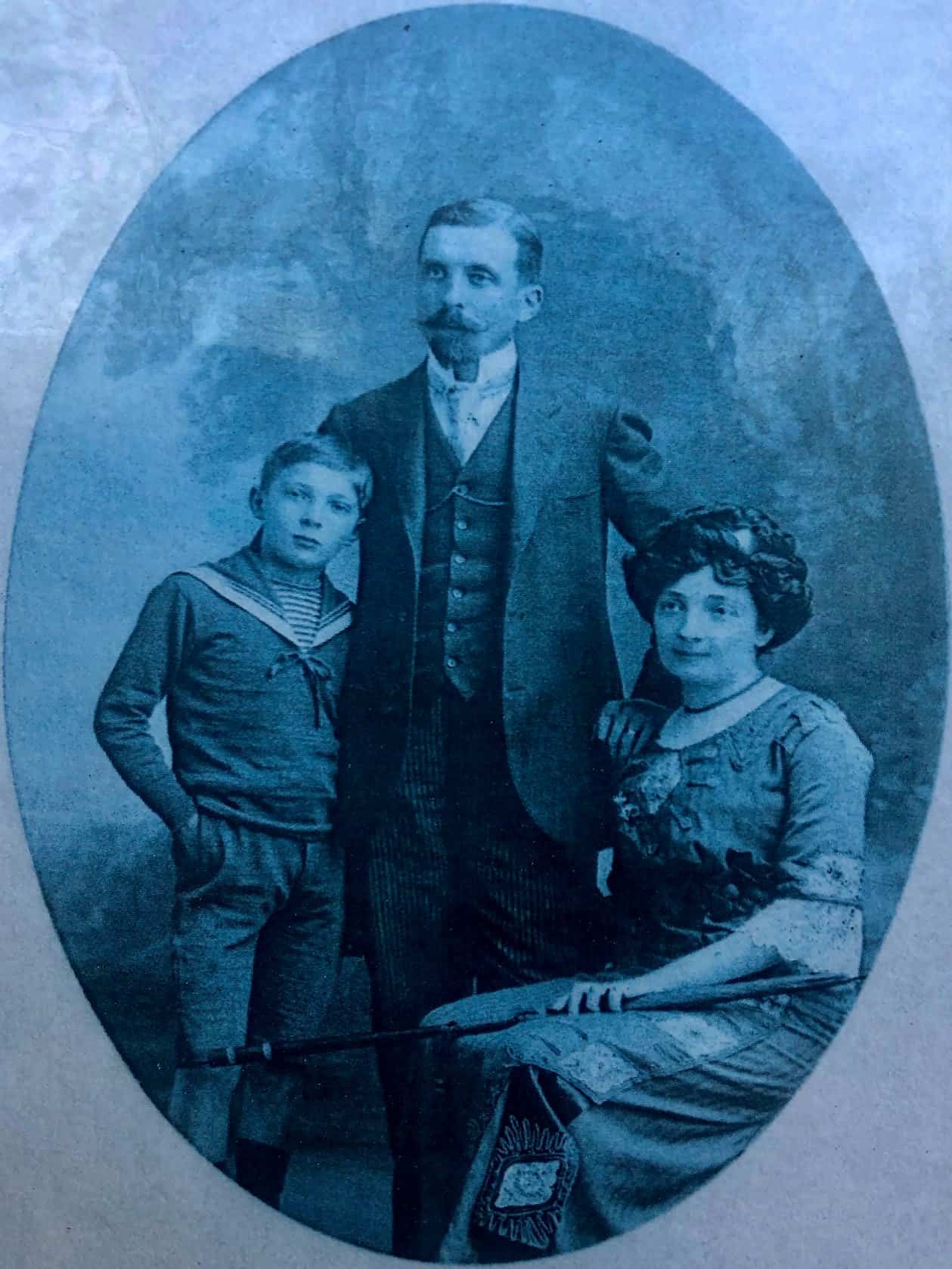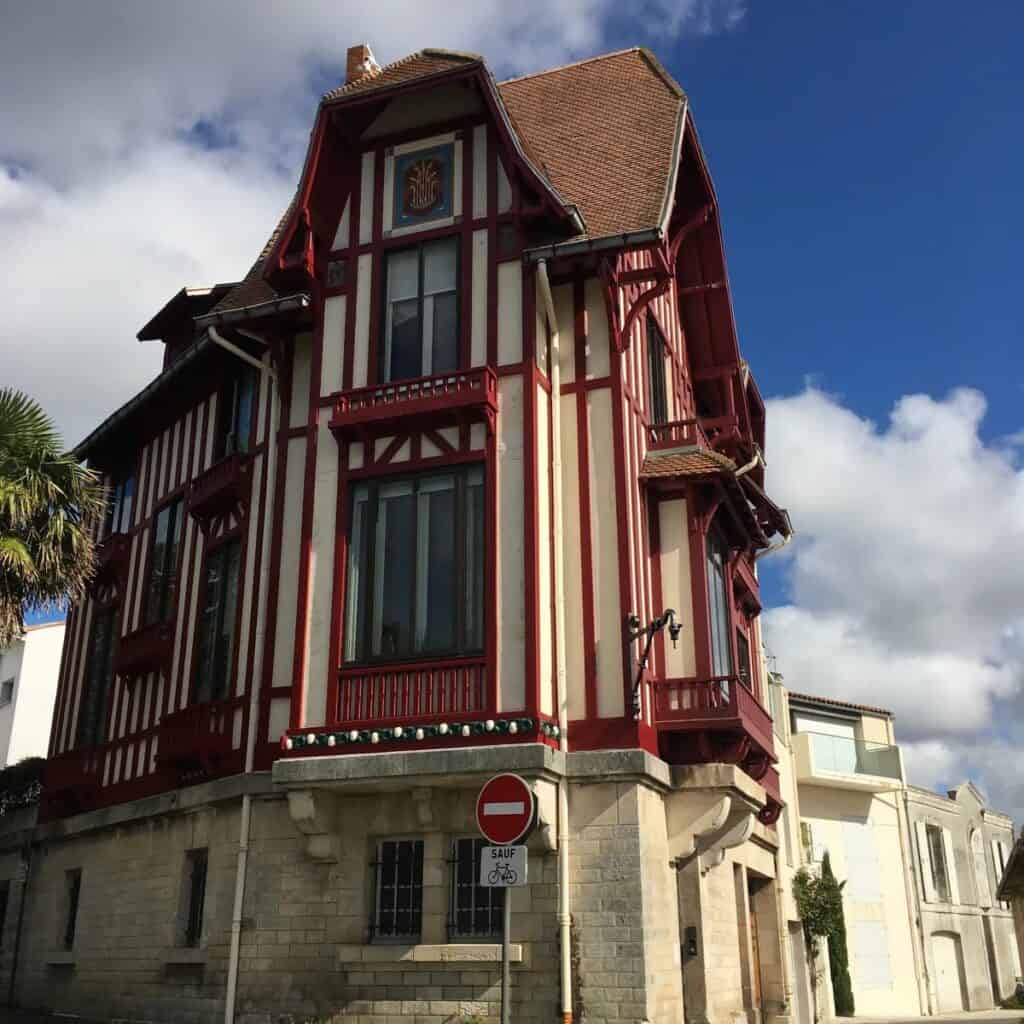Nestled at the intersection of Chemin des Remparts and Rue des Deux Moulins in the picturesque coastal city of La Rochelle, France, stands La Maison du Chat, or “The Cat House.” This charming residence, constructed between 1925 and 1927 by architect Maurice Morguet, is a striking example of Norman Revival architecture, blending traditional design elements with playful artistic flourishes. Its distinctive wood-and-plaster facade, painted in a warm Basque red and adorned with intricate ceramic decorations, makes it a standout landmark in the city’s architectural landscape.

A House with a Rich History
The Cat House was built on the site of a former guardhouse, a modest structure that was part of La Rochelle’s 17th-century military defense system. This historical connection is still visible on city maps from the late 19th century. The house was commissioned by Paul Gourdan, a wealthy entrepreneur in carpentry and joinery, who wanted a grand residence for his family. Gourdan’s company, founded in 1877 and located at 20 rue Chef-de-Ville, played a significant role in constructing several prominent buildings in La Rochelle, including the city’s train station, the Banque de France on Rue Réaumur, and the École Normale. The train station, in particular, showcased Gourdan’s expertise in monumental timber framing and decorative woodwork.
Paul Gourdan was married to Marie Perreau, the daughter of Gustave Perreau, a senator of Charente-Maritime and mayor of La Rochelle from May 1925 to September 1928. It was Marie who chose the exceptional location for the family home, a strategic spot overlooking La Rochelle Bay and the entrance to the old port. This prime position, however, made The Cat House a target during World War II, when it was occupied by German troops. During the occupation, the owners took great care to dismantle and preserve the house’s intricate wooden decorations, which were reinstalled after the war.

The Cat House Architecture: A Fusion of Art and Design
The Cat House is a visual feast, showcasing a harmonious blend of animal and vegetal motifs that reflect the artistic trends of the early 20th century. The facade features delicate floral patterns and vine-like designs, evoking a sense of natural beauty and craftsmanship. However, the true pièce de résistance is the earthenware cat sculpture perched atop the roof’s front gable. This tricolored feline, with its sinuous body, arched back, and upright tail, appears almost lifelike, as if it might leap off the roof at any moment. Its playful yet elegant posture captures the imagination of passersby, making the house a beloved local icon.
The cat sculpture is not merely decorative; it serves as a symbol of the house’s identity. While the exact inspiration behind the feline figure remains shrouded in mystery—some speculate it was a whimsical addition by Morguet, while others believe it was a personal touch by the Gourdan family—it has fueled numerous local legends and even conspiracy theories. The enigmatic cat has become an enduring emblem of La Rochelle’s charm and creativity.

Cats in French Culture: A Timeless Fascination
The inclusion of a cat in the design of The Cat House is no coincidence. Cats have long held a special place in French culture, symbolizing mystery, independence, and elegance. From the literary works of Charles Baudelaire, who celebrated the enigmatic nature of cats in his poetry, to the iconic posters of Théophile Steinlen featuring the famous Le Chat Noir, felines have been revered as cultural icons in France.
The Cat House embodies this cultural affinity, with its rooftop sculpture serving as a nod to the nation’s enduring love for cats. The feline’s poised stance and watchful gaze evoke a sense of curiosity and grace, qualities that resonate deeply in French art and literature. This connection to broader cultural themes makes the house more than just an architectural curiosity; it is a reflection of France’s artistic heritage.

A Neighborhood of Animal Motifs: The Cat House in Context
The Cat House is not the only building in La Rochelle to feature animal motifs. Just a short distance away stands La Maison au Chien (The Dog House), another architectural gem that incorporates animal imagery into its design. These structures highlight a trend in early 20th-century architecture, where animals were used as decorative elements to convey personality, whimsy, or symbolism.
The prevalence of animal motifs in La Rochelle’s architecture speaks to the city’s vibrant artistic spirit and its residents’ appreciation for creativity. These designs often reflect the interests of the homeowners or the architect’s vision, offering a glimpse into the cultural and social values of the time. Together, these buildings create a unique narrative that enriches the city’s historical tapestry.
Preservation and Tourism: A Living Legacy
Today, The Cat House is more than just a private residence; it is a cherished part of La Rochelle’s cultural heritage. The house attracts tourists, photographers, and architecture enthusiasts from around the world, all drawn to its unique design and the story behind its feline ornamentation. Its preservation is a testament to the city’s commitment to safeguarding its architectural diversity and historical depth.
Efforts to maintain and restore buildings like The Cat House are crucial, as they provide a tangible connection to the past and contribute to the community’s cultural identity. By preserving such landmarks, La Rochelle ensures that future generations can appreciate the artistry and history embedded in its streets.
The Cat House in a Global Context: Cats in Architecture Worldwide
The Cat House is not an isolated example of feline-inspired architecture. Around the world, cats have been incorporated into building designs in various ways, reflecting their universal appeal. In Japan, for instance, the Maneki-neko (beckoning cat) is a common feature in shops and homes, symbolizing good fortune and prosperity. In Turkey, the city of Istanbul is renowned for its population of stray cats, which have inspired public art installations and even cat-themed cafes.
By exploring the role of cats in architecture across different cultures, we gain a deeper understanding of how these beloved animals have influenced human creativity and expression. The Cat House stands as a testament to this global phenomenon, showcasing the unique ways in which cats have been celebrated in French culture.
Conclusion: A Feline Masterpiece
The Cat House is more than just a house; it is a celebration of artistry, culture, and the enduring charm of cats. Through its distinctive design and the enigmatic cat sculpture that crowns its roof, the house captures the imagination and hearts of all who encounter it. As a symbol of La Rochelle’s architectural and cultural heritage, it reminds us of the power of creativity to transform ordinary structures into extraordinary landmarks.
Whether you’re a cat lover, an architecture enthusiast, or simply a curious traveler, a visit to The Cat House is sure to leave you enchanted. It is a living testament to the whimsy and wonder that can be found in the most unexpected places, proving that even a simple house can tell a story as captivating as the feline that guards it.




